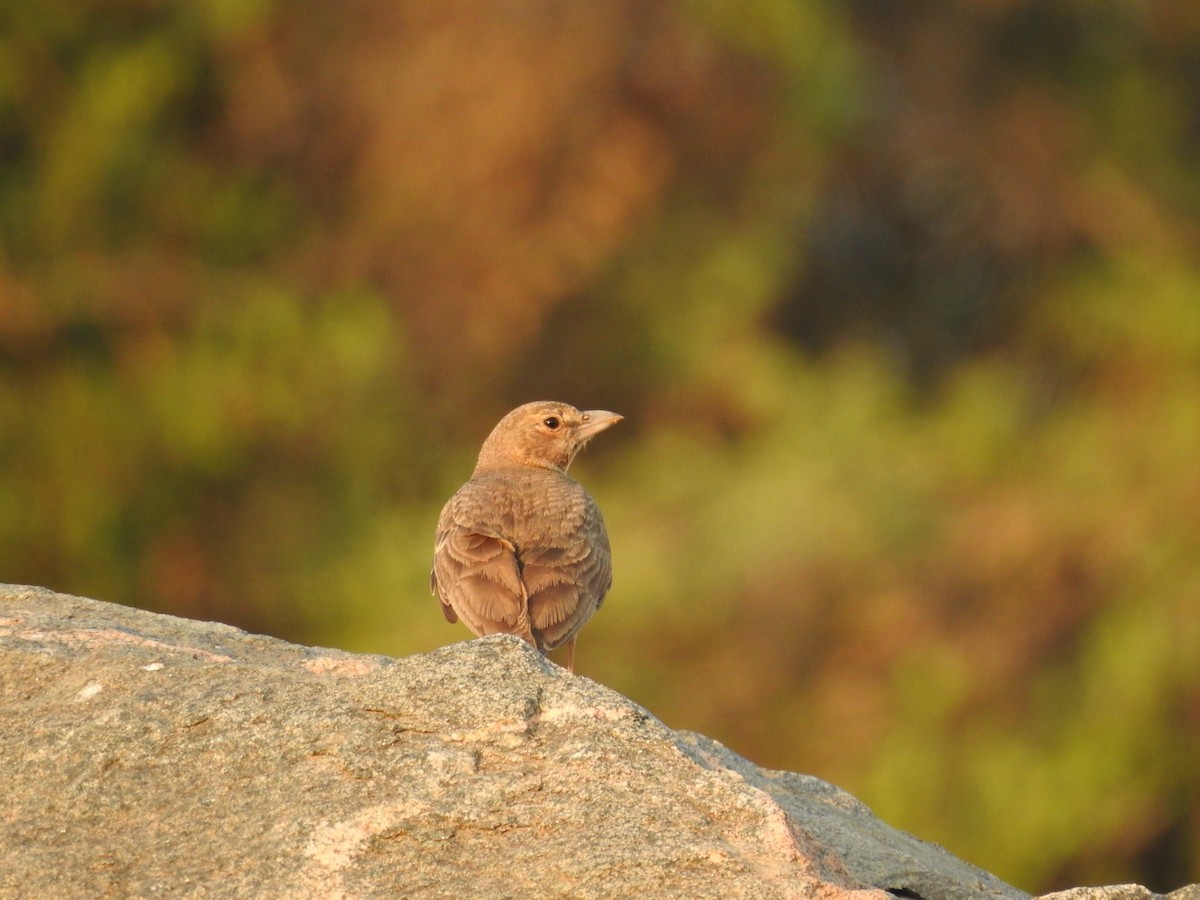Rufous-tailed Lark
A species of Desert Larks Scientific name : Ammomanes phoenicura Genus : Desert Larks
Rufous-tailed Lark, A species of Desert Larks
Botanical name: Ammomanes phoenicura
Genus: Desert Larks
Content
Description General Info
 Photo By Ashwin Viswanathan
Photo By Ashwin Viswanathan Description
Like other Ammomanes larks, the species has a wide curved beak with the nostrils covered by feathers. The hindclaw is as long as the hindtoe and moderately curved. The base of the lower mandible is fleshy while the rest is horn-grey. The legs are also flesh coloured. In the field, the rufous colour, the reddish rump and a dark tail band (narrowing towards the sides to give a triangular shape) are distinctive. The throat is lightly streaked in dark brown. Young birds have less streaking on the underside. 
Size
16 cm
Nest Placement
Ground
Habitat
The rufous-tailed Lark predominantly resides in arid and semi-arid zones, favoring environments such as scrub forests, savannas, and deciduous woodlands. Adapted to open landscapes, it thrives in dry grasslands with occasional rocky features and areas of short grass mingled with exposed soil. This species avoids urban territories, instead opting for rural spaces, often near fallow agricultural fields.
Dite type
Granivorous
General Info
Feeding Habits
Bird food type
Behavior
Usually seen on the ground, but sometimes perching on wires, these birds are not secretive. They walk on the ground making quick dashes to capture insects and when disturbed crouch and stay still to flush only when approached very close. The breeding season is from February to May. The display of males involves rising high with deep beats of the wing and then descending in a series of nose dives accompanied by short burbling or chirruping notes. They also call while perched. The nest is built in a depression in the ground and two to four eggs form the typical clutch. The eggs are broad oval with some gloss. The colour is creamy or pale yellowish-white with spots all over but denser at the broad end. The incubation period has not been ascertained. 
Distribution Area
The species is found mainly in low altitude dry regions in open habitats without significant tree cover. It is resident mainly within India south of the Ganges extending west to Kutch and the Aravallis of Rajasthan. They are summer visitors to parts of Pakistan in northern Punjab and in southern Nepal. The species does not occur in Sri Lanka and reports of their occurrence on the island of Rameshwaram have not been confirmed while the species is largely absent along the Western Ghats region particularly in Kerala. 

 Photo By Ashwin Viswanathan
Photo By Ashwin Viswanathan Scientific Classification
Phylum
Chordates Class
Birds Order
Perching birds Family
Larks Genus
Desert Larks Species
Rufous-tailed Lark